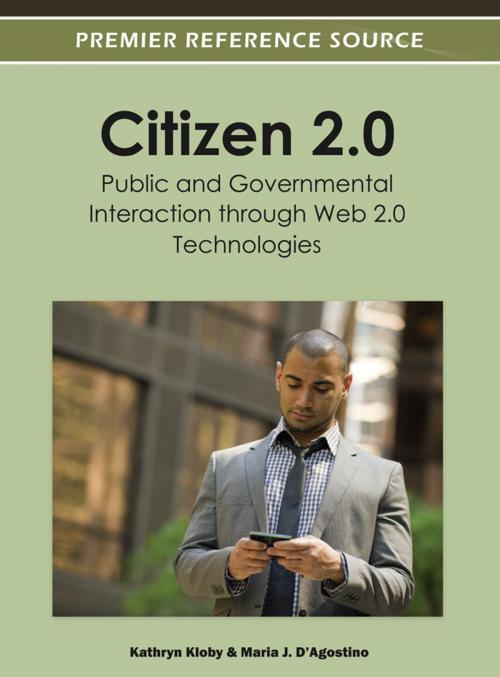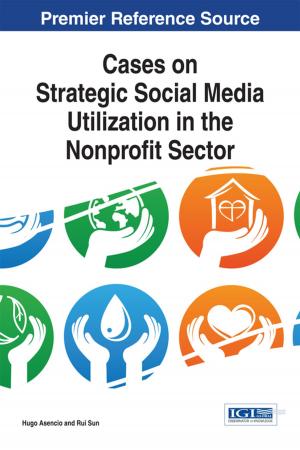Citizen 2.0: Public and Governmental Interaction through Web 2.0 Technologies
Nonfiction, Social & Cultural Studies, Political Science, Government, Public Affairs & Administration| Author: | ISBN: | 9781466603714 | |
| Publisher: | IGI Global | Publication: | March 31, 2012 |
| Imprint: | Information Science Reference | Language: | English |
| Author: | |
| ISBN: | 9781466603714 |
| Publisher: | IGI Global |
| Publication: | March 31, 2012 |
| Imprint: | Information Science Reference |
| Language: | English |
Generally speaking, Web 2.0 technologies support real-time or other innovative, Web-based social interactions, and they are increasingly popular among consumers, the private sector, and more recently, government. Citizen 2.0: Public and Governmental Interaction through Web 2.0 Technologies defines the role of Web 2.0 technologies in government and highlights a variety of strategies and tools public administrators can use to engage citizens. Chapters provide suggestions for adoption and implementation based on the lessons learned by scholars and practitioners in the field. More importantly, it will present an analysis of how Web 2.0 technology can transform government and explore how citizen expectations and preferences can be included in decision-making. The collection provides a vital resource for practitioners and academics to stay abreast of the latest research within the ever-burgeoning field.
Generally speaking, Web 2.0 technologies support real-time or other innovative, Web-based social interactions, and they are increasingly popular among consumers, the private sector, and more recently, government. Citizen 2.0: Public and Governmental Interaction through Web 2.0 Technologies defines the role of Web 2.0 technologies in government and highlights a variety of strategies and tools public administrators can use to engage citizens. Chapters provide suggestions for adoption and implementation based on the lessons learned by scholars and practitioners in the field. More importantly, it will present an analysis of how Web 2.0 technology can transform government and explore how citizen expectations and preferences can be included in decision-making. The collection provides a vital resource for practitioners and academics to stay abreast of the latest research within the ever-burgeoning field.















